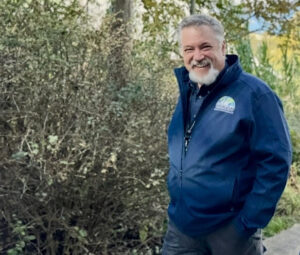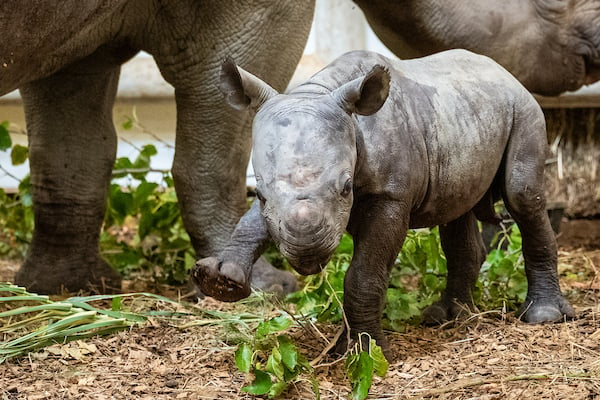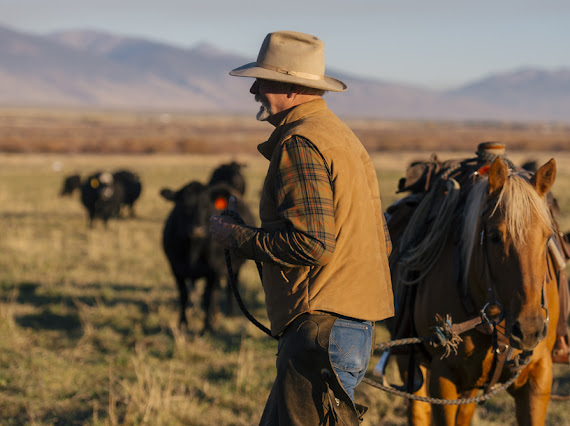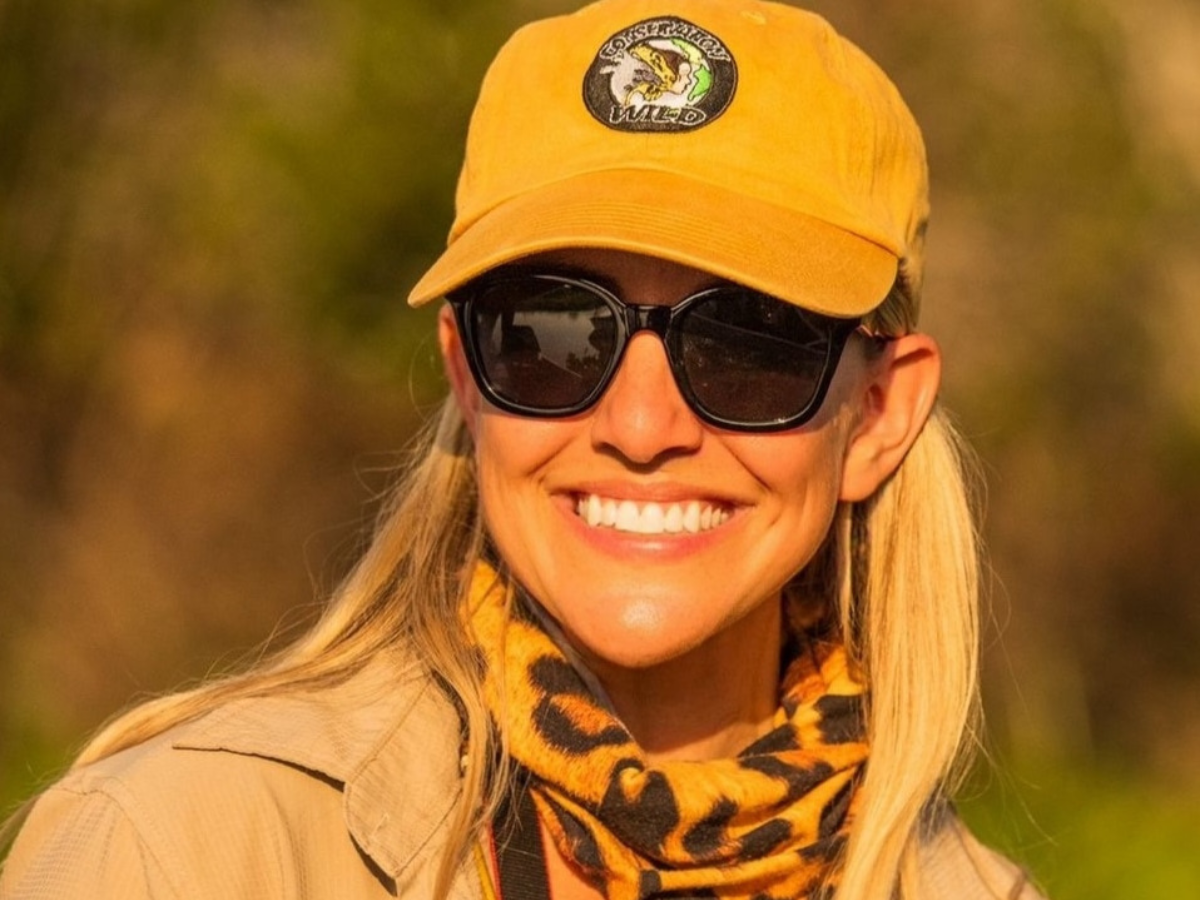(CLEVELAND, Ohio) — The Cleveland Metroparks Zoo welcomed an Eastern black rhinoceros calf into the world on Sept. 13. The birth was announced on Sept. 22, World Rhino Day. The rhinos are critically endangered, with fewer than 583 adults remaining in the wild, according to the zoo.
Recently, The Click talked with Travis Vineyard, an animal curator for the zoo, about the rhino birth and how local zoos are supporting conservation efforts while assisting in the fight against poaching and wildlife trafficking.
This interview was edited for length and clarity.

Travis Vineyard at the Cleveland Metroparks Zoo. [Photo Credit: Cleveland Metroparks Zoo]
Vineyard: That’s a good question because a limiting factor in generally, probably all, zoos have is space. And so what Daniel Maltz Rhino Reserve did for us was add space that we could offer rhinos. Historically, we’ve been very successful with black rhinos—and that was kind of the driver. As zoos have evolved, we’ve evolved. [Specifically] looking at the behaviors and recognizing that these females and calves … don’t appreciate a male in close proximity. That extra exhibit space allowed us to make a lot of contributions towards welfare in black rhinos.
The Click: In what capacity does the zoo work with the U.S. Fish and Wildlife Service?
Vineyard: It’s several different degrees. Whenever we move animals internationally, U.S. Fish and Wildlife is a partner in granting and approving permits. We had an eastern black rhino that lived a very fulfilling life and died here of geriatric age, a couple years ago … she was imported from South Africa and so that was a key partnership there. U.S. Fish and Wildlife also comes into play with other programs
The Click: Is there anything the zoo does to actively combat poaching and wildlife trafficking?
Vineyard: Yes, zoos and aquariums are great fundraisers because they have an audience that loves wildlife. They come and contribute funds and resources. We generate revenues [so we] can financially support anti-poaching efforts and game wardens. We can also share educational messages and share the resources and outcomes of the research. I think everybody would probably agree the rewards that come by just being able to finance and fund [conservation efforts] goes a long way.
The Click: For those who are big fans of rhinos, or just want to help, what can they do?
Vineyard: You can obviously visit your local zoos and aquariums, contribute to any sort of financial ventures that they have going on. One prime example, and really applicable to our conversation about rhinos, is that we have a naming contest to help us name the rhino. The vote is through a [$25 minimum] donation and those funds go directly towards an effort to combat illegal wildlife trade. That’s the main thing that impacts wild black rhinos. It’s kind of a coveted thing to be able to name an animal, and it’s something that we can pass on to the community. They can do good and take an actionable item, like “I’m gonna specifically dedicate some of my resources to help.”
The zoo says they will announce the rhino’s new name on social media soon.


